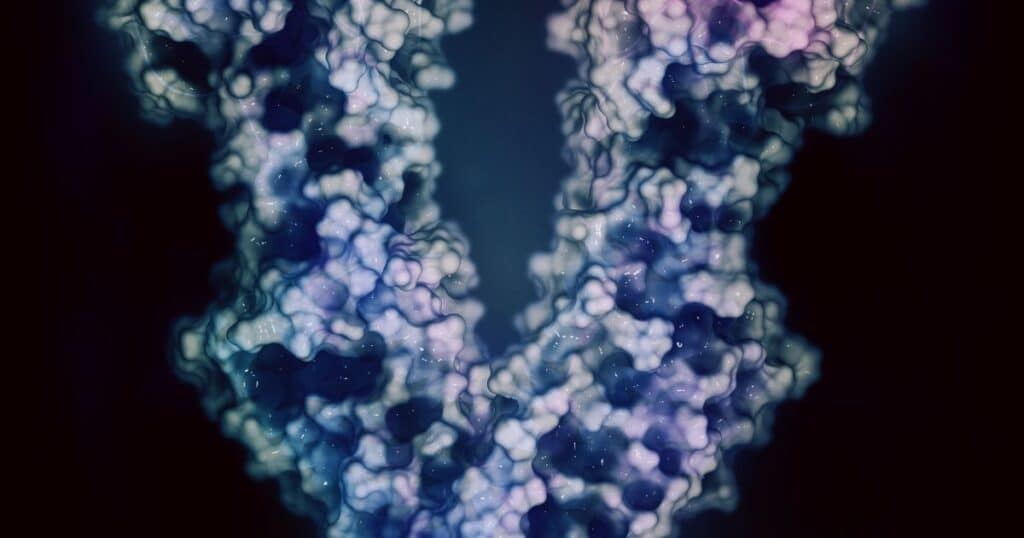Have you ever considered how your body reacts to the medicine you take? Does your body process it in the same way it would with food, or is there a difference? If you’re curious, Pharmacokinetics can answer how your body interacts with medicinal drugs from absorption to elimination.
This article aims to introduce the concept of Pharmacokinetics to beginner pharmacy students or individuals with limited knowledge of the subject. The following points will be covered to enhance understanding.

- What is Pharmacokinetics?
- What are the basic principles and processes of Pharmacokinetics?
- Why do we study Pharmacokinetics?
- How Pharmacokinetics helps us to predict the bioavailability of drugs?
- What information do we have about the Pharmacokinetics of the drug?
What is Pharmacokinetics?
Pharmacokinetics is the branch of pharmacology that examines the impact of the body on drugs. It studies the processes of absorption, distribution, metabolism, and elimination of drugs within the body. It provides insight into how the body interacts with drugs and how it affects their therapeutic efficacy. On the other hand, pharmacodynamics deals with the effects of drugs on the body, including how they interact with biological systems to produce therapeutic or adverse effects. These two fields of study complement each other to give a comprehensive understanding of the behavior of drugs within the body.
which tells what the drug’s effect will be on the body. More simply, we can say that pharmacology is an extensive study of drugs that is divided into two main sub-branches:
- Pharmacodynamics: what drugs do to the body
- Pharmacokinetics: what the body does to the drug
The Pharmacokinetics of the drug, along with pharmacodynamics, helps to predict the fate of the drug. It deals with the absorption, distribution, and elimination of drugs from the body.
Basic principles of Pharmacokinetics:
Four main processes are often known as principles of Pharmacokinetics and abbreviated as ADME. Pharmacokinetics is based on the following four processes.
The absorption of a drug occurs primarily in the small intestine, facilitated by the presence of villi and microvilli. The rate and extent of drug absorption are influenced by several factors, including:
- The route of administration (oral, intravenous, etc.)
- The solubility and stability of the drug in the body
- The presence of food or other substances that can affect absorption
- The pH and the blood flow in the area of absorption
- The metabolic activity of the liver and other organs may metabolize the drug before it is absorbed into the bloodstream.
- These factors can greatly impact the Pharmacokinetics of a drug and should be considered when evaluating its therapeutic efficacy.
- Routes of administration
- Blood flow
- Concentration
Once a drug has been absorbed into the bloodstream, it is distributed throughout the body via the blood vessels. The distribution of a drug within the body is influenced by several factors, including:
- The lipid solubility of the drug
- The drug’s binding to plasma proteins
- The presence of other drugs that can compete for the same binding sites
- The blood flow to different tissues
- The permeability of cell membranes in different tissues
- The metabolic activity of different tissues
- These factors determine where the drug accumulates in the body and how it reaches its target site of action. Understanding the distribution of a drug is important for optimizing its therapeutic efficacy and minimizing adverse effects.
- Size of organ
- Blood flow
- Solubility
- Binding with plasma protein
- The apparent volume of distribution
Drug metabolism, also known as biotransformation, is a process that occurs primarily in the liver but also in other organs such as the gut and the lungs. During metabolism, the body transforms the drug into its metabolites, which may have different pharmacokinetic and pharmacodynamic properties than the original drug. The rate of metabolism can be influenced by several factors, including:
- The genetic makeup of the individual
- The presence of liver or other metabolic diseases
- The presence of other drugs that may inhibit or induce drug-metabolizing enzymes
- The chemical structure of the drug
- The metabolites of a drug may be more or less active than the original drug, and some may even have toxic effects. Understanding drug metabolism is important for predicting a drug’s pharmacokinetics and pharmacodynamics and minimizing adverse effects.
- Elimination of drugs to remove the drug from the body. It occurs through the liver or kidneys.
- First-order elimination
- Zero-order elimination
Basic principles of Pharmacokinetics tell us that after taking any medicine or drug, how it will be absorbed, metabolized, distributed, and eliminated throughout the body. All these parameters are significant to estimate that after absorption or metabolism, what will the
Bioavailability of drugs? Is the drug elimination properly out of the body or not? These four basic principles of Pharmacokinetics open new doors of concepts and raise questions about the solubility of drug diffusibility. That’s how your body affects the drug.
Fundamental parameters of Pharmacokinetics:
The fundamental parameters of Pharmacokinetics are based on the basic principles and processes of drug behavior within the body. These parameters include:
- The volume of Distribution: The volume of distribution measures how widely a drug is distributed in the body and reflects the relationship between the amount of the drug in the body and its concentration in plasma and blood.
- Clearance: Clearance represents the amount and rate of elimination of a drug from the body. It is calculated as the product of the blood flow to the organ of elimination and the extraction ratio, which is the fraction of the drug removed from the blood as it passes through the organ. Clearance can be calculated for each organ that eliminates the drug, such as the liver and kidneys.
Bioavailability is a measure of the effectiveness of a drug, defined as the quantity of the drug that reaches systemic circulation and can have a therapeutic effect. It is influenced by factors such as the administration route, the drug’s solubility and stability, and the presence of other substances that may affect its absorption, distribution, and metabolism.
- Dosing: Dosing refers to administering a drug, including both the maintenance and loading doses. The maintenance dose is required to maintain a therapeutic concentration of the drug, while the loading dose is a higher dose used initially to rapidly achieve therapeutic concentration. The choice of dosing regimen depends on the pharmacokinetic parameters of the drug, the patient’s clinical condition, and the desired therapeutic effect.
Now you can relate to how the basic principles of Pharmacokinetics are linked with the fundamental parameters and help the researchers to determine
- The half-life of the drug
- Therapeutic window
- Loading dose
- Maintenance dose
- Elimination half-life
- The area under the concentration curve
Why do we study Pharmacokinetics?
The study of Pharmacokinetics encompasses the processes by which the body handles medication. It is an integral part of pharmacy education for several reasons. In both academic and professional settings, understanding pharmacokinetics is crucial in highlighting its significance and applications.
- Pharmacokinetics provides students with basic concepts of the factors that may reduce or increase the bioavailability of any medicinal drug in the body.
Pharmacokinetics (PK) plays a key role in determining the bioavailability of a drug by explaining how its formulation can impact its absorption and effectiveness in the body.
Pharmacokinetics, when combined with pharmacodynamics, provides a comprehensive understanding of pharmacology.
Pharmacokinetics examines the relationship between the absorption of a drug and its pH and solubility, as well as the impact of metabolism on its bioavailability.
- It gives the student a valid reason why this drug is poorly absorbed in the stomach and highly absorbed in the small intestine or vice-versa.
- Pharmacokinetics is further related to other sub-branches like toxicology and biopharmaceutics.
Significance of Pharmacokinetics:
Pharmacokinetics help the prescribers/pharmacists/physician to know about the pattern in which a drug is being absorbed or metabolized, and they will be able to
- Predict the bioavailability of the drug.
- Evaluate the drug-drug interactions.
- Adjust the drug dose and dosing intervals.
- Decrease drug toxicity.
- Choose the optimal drug regimen.
Pharmacokinetics assist researchers during their research work in drug discovery and development in the following ways.
- Accurate pH where the drug liberates from the dosage form
- The site of absorption of the drug
- To estimate the bio-availability of the drug by testing the drug in vivo.
- To produce modified-release drug formulations
- To modify the pre-existing drug
What should we know about Pharmacokinetics as a pharmacist?
Pharmacists are trained to become drug experts and are expected to know about everything about a medicinal drug. Of Course, having information about every drug seems impossible, but the most common drugs or OTC medications are important to consider and focus on. As a pharmacist, we believe in knowing that.
- The intravenous route of administration gives 100% bioavailability of the drug as it avoids the first-pass metabolism compared to orally administered drugs. In contrast, the intramuscular route is influenced by blood flow.
- Drugs are weakly acidic or basic; therefore, their bioavailability depends upon their solubility, lipophilicity, pH value, and pKa value ( dissociation constant).
- Patients with nonfunctional kidneys or who have impaired kidney function should be prescribed low doses of drugs eliminated by kidneys; otherwise, there are high chances of drug toxicity.
- Same in cases of patients with impaired function of the liver, such as fatty liver disease or liver cirrhosis. If the drug following hepatic clearance is administered to liver-compromised patients, its dose must be reduced to avoid serious side effects.
- Mathematical calculation of the rate of reaction, half-life, and elimination half-life with the help of various formulas and equations.
Before you leave:
Here we go through the main concept, process, and principle of Pharmacokinetics. Of Course, pharmacodynamics is a vast subject that can’t be completely discussed on a single page. Every class of medicinal drug possesses its characteristic pharmacokinetic properties, or you can say that the body treats every drug differently depending upon the route of administration and other parameters.
9 Types of Solid Dosage Forms: Advantages and Disadvantages



